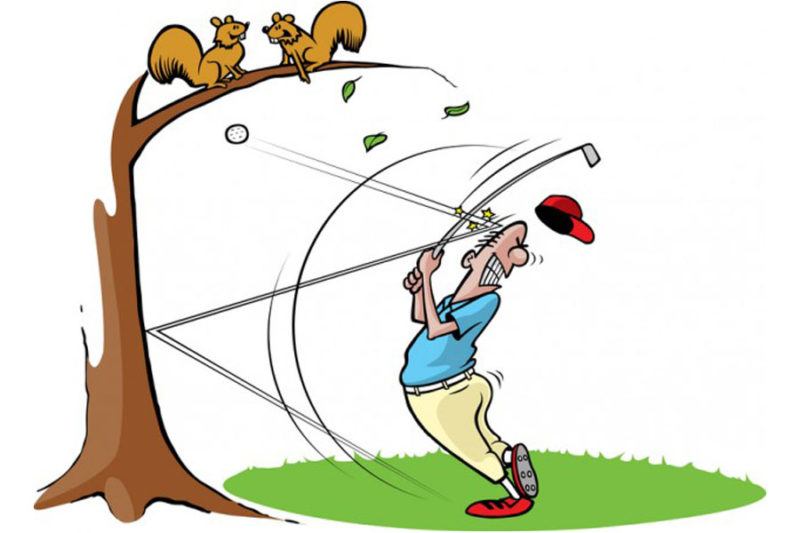Common Golf Injuries
A Harvard Medical School study conducted in 2004 revealed that the most common golf injuries occur to a player’s back. 36 percent of injuries that were documented were to the back, while another 32 percent were to the elbow. Although golf is certainly not considered a contact sport, the motion of a golf swing can lead to these injuries, as well as damage to the knees, hips, shoulders, wrists and other parts of the body.
Back Injury
There are two factors that make the back the most commonly injured area of a golfer’s body. One is the aforementioned motion of his or her golf swing while the other is the fact that golfers employ putting stances in which they are hunched over. Both of these actions put undue strain on the back’s set of lower vertebrate. Stress from the repetition of a golf swing can also impact the lumbar spine, with the more mediocre the golfer the more swings she will take in any given round. The bending over necessary to retrieve the golf ball, pick up clubs or golf bags, and replace divots also contributes to these golf injuries to the back arthritis is common in those that golf frequently as it can invade the worn out vertebrate and result in pain.
Elbow Injury
The term golfer’s elbow is easier to say than the medical term medial epicondylitis, but both mean the same thing. It is the inflammation and pain that results in the inside portion of the upper part of the arm located near the elbow. While tennis elbow is felt on this outside part of the arm, both have a similar cause-overuse. The repetition can stress the elbow and gripping a golf club the wrong way can also damage the elbow when it is swung. The elbow can become painful and stiff, with making a fist an especially painful act. The hands may also feel weak in a player experiencing golfer’s elbow.
Shoulder Injury
By far the most common golf injury that affects the shoulder is a rotator cuff injury. The wear that a golfer’s swing puts on the set of muscles associated with the shoulder and its socket can tear them as well as tendons, precipitating scar tissue which can impair movement. Arthritis, bursitis and other inflammatory conditions can occur in the joint. In rare instances a golfer can even dislocate his shoulder.
Wrist and Hand Injury
When golfers hit the ball, the impact travels through the club and is absorbed by the hands and wrists. As the strokes mount up, they can lead to hand and wrist injury. Tendons can be strained and eventually lose their mobility. Tendinitis, a stiffness and swelling of a joint, can occur as can carpal tunnel syndrome, a numb feeling that radiates from the wrist to the fingers. DeQuervain’s tendinitis is also frequently seen in golfers; it is a condition where the wrist hurts near the base of the player’s thumb. Pain in a golfer’s hands can be brought about by hard to detect fractures of certain bones that result from striking the ball over and over.
Knee and Hip Injury
A golfer’s swing can contribute to or worsen a knee injury. Symptoms such as the knee clicking when the golfer walks, pain located in the knee, and swelling that gets worse when the knee is used are common. Hips can sometimes be injured by golfers, although this is not a frequently seen injury. However, existing hip problems can be exacerbated by golfing and a golfer may potentially tear her labrum, the lining of her hip socket, if her club should happen to strike the ground hard during her swing.
Source: John Lindell






